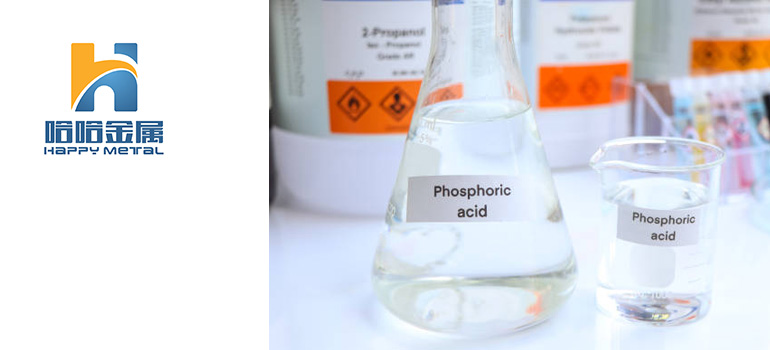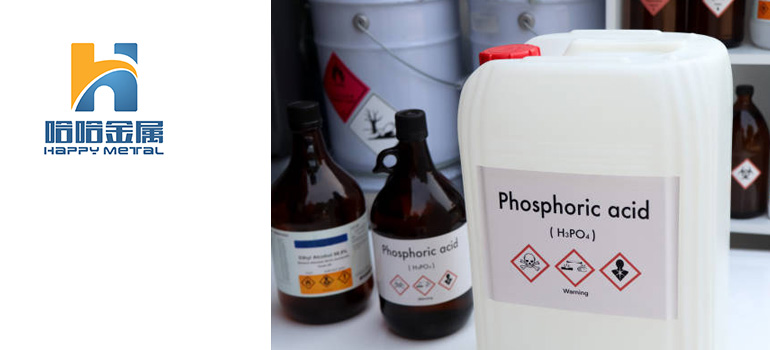Summary:
Unlocking the Versatility: Food Grade Phosphoric Acid Applications Demystified
What is Food Grade Phosphoric Acid
Chemical Composition and Properties
Importance of Food Grade Certification
Culinary Applications of Food Grade Phosphoric Acid
Industrial Uses Beyond the Kitchen
What is Food Grade Phosphoric Acid?
Food grade phosphoric acid is a form of phosphoric acid that has undergone strict purification processes to ensure it meets food safety standards. It is typically found in a highly pure liquid form, colorless and tasteless, hence it does not significantly alter the taste or appearance of food. This compound is widely used in the food industry for various purposes, ranging from improving the texture and taste of food to extending its shelf life.
In essence, phosphoric acid is a mineral acid that is commonly used as an additive in food production. It serves multiple functions, such as adjusting acidity, acting as a preservative, and enhancing flavors. Food grade phosphoric acid is distinguished from other types of phosphoric acid by its adherence to rigorous food safety certification standards. This certification ensures that it complies with regulations governing food safety and can be safely used in food processing without posing harm to human health.
Overall, food grade phosphoric acid plays a crucial role in the food industry, contributing to the safety, quality, and taste of various food products. Its versatility and effectiveness make it a valuable ingredient in food processing and preservation.
Chemical Composition and Properties

The chemical composition and properties of food grade phosphoric acid are fundamental to understanding its applications and significance in various industries. Here’s a breakdown of its composition and key properties:
Chemical Composition:
Food grade phosphoric acid, also known as orthophosphoric acid (H3PO4), is an inorganic mineral acid composed of phosphorus, oxygen, and hydrogen atoms. It is classified as a weak acid, meaning it partially dissociates in water to release hydrogen ions (H+) and phosphate ions (H2PO4- or HPO4^2-) in solution.
Properties:
Acidity: Phosphoric acid is characterized by its acidic nature, with a pH typically ranging from 2.2 to 2.4 in its concentrated form. This acidity makes it useful for adjusting the pH of food products and beverages.
Solubility: Food grade phosphoric acid is highly soluble in water, forming a clear, colorless solution. This high solubility makes it easy to incorporate into various food and beverage formulations.
Viscosity: In its concentrated form, phosphoric acid has a relatively high viscosity, which can influence its handling and mixing properties in industrial applications.
Hygroscopicity: Phosphoric acid exhibits hygroscopic properties, meaning it has a tendency to absorb moisture from the atmosphere. This property can affect its stability and handling characteristics, particularly in storage and transportation.
Chelating Agent: Phosphoric acid can act as a chelating agent, forming stable complexes with metal ions. This property is important in food processing, where it can help prevent undesirable interactions between metal ions and food components.
Reactivity: While food grade phosphoric acid is generally stable under normal conditions, it can react with certain substances, such as alkalis and reactive metals, to produce heat and release gases.
Understanding the chemical composition and properties of food grade phosphoric acid is essential for its safe and effective use in various applications, including food and beverage processing, pharmaceuticals, agriculture, and industrial processes. Its unique characteristics make it a versatile ingredient with diverse functionalities in different industries.
Importance of Food Grade Certification
The importance of food grade certification cannot be overstated, especially when it comes to substances like phosphoric acid used in food production. Here’s why food grade certification matters:
Safety Assurance: Food grade certification ensures that the product meets strict safety standards set by regulatory authorities. This certification verifies that the substance is safe for consumption and does not contain harmful impurities or contaminants that could jeopardize public health.
Compliance with Regulations: Food grade certification demonstrates compliance with food safety regulations and guidelines established by government agencies. This is particularly crucial in the food industry, where strict regulations govern the production, processing, and handling of food products.
Consumer Confidence: Consumers rely on food grade certification as a symbol of trust and quality assurance. When they see a product labeled as “food grade,” they can have confidence that it has undergone rigorous testing and meets the highest standards of safety and purity.
Market Access: Many markets require products to have food grade certification before they can be sold or distributed. Without this certification, manufacturers may face barriers to market entry and may be unable to access certain markets, both domestically and internationally.
Protection of Brand Reputation: Obtaining food grade certification helps protect the reputation and integrity of brands. It demonstrates a commitment to quality and safety, which can enhance brand trust and loyalty among consumers.
Risk Mitigation: Food grade certification helps mitigate the risk of product recalls, legal liabilities, and reputational damage associated with food safety incidents. By adhering to strict certification standards, manufacturers reduce the likelihood of safety breaches and ensure product consistency and reliability.
In summary, food grade certification is essential for ensuring the safety, quality, and integrity of food products. It provides consumers with confidence in the safety of the products they consume while enabling manufacturers to demonstrate their commitment to excellence and compliance with regulatory standards.
Culinary Applications of Food Grade Phosphoric Acid
The culinary applications of food grade phosphoric acid extend far beyond mere acidity adjustment. Here’s a detailed exploration of its diverse uses in the culinary world:
Flavor Enhancement in Food and Beverages:
Acidulation: Phosphoric acid is commonly used to adjust the acidity of food and beverages, balancing sweetness and enhancing overall flavor profiles. In carbonated beverages like colas, it provides a tangy, refreshing taste.
Citrus Enhancer: Due to its tartness, phosphoric acid can mimic the tangy acidity found in citrus fruits. It is often added to sauces, dressings, and marinades to impart a citrus-like brightness without altering the flavor profile.
Balance in Sauces: When incorporated into savory sauces and condiments, phosphoric acid helps to balance flavors by providing a subtle acidity that complements other ingredients.
Role in Food Preservation and Shelf Life Extension:
Antimicrobial Properties: Phosphoric acid exhibits antimicrobial activity, inhibiting the growth of bacteria and fungi in food products. It is used as a preservative in sauces, dressings, and canned foods to extend shelf life and maintain product freshness.
Preventing Browning: In fruit-based products and beverages, phosphoric acid can help prevent enzymatic browning by lowering the pH and inhibiting the activity of polyphenol oxidase enzymes.
Texturizing and Emulsifying Properties:
Texture Modifier: Phosphoric acid can be used to modify the texture of certain foods, particularly in the production of processed cheese and dairy products. It helps create a smooth, creamy texture and improves meltability.
Emulsification Agent: In salad dressings and mayonnaise, phosphoric acid acts as an emulsifying agent, stabilizing oil-in-water emulsions and preventing separation.
pH Regulation and Acidification Effects:
pH Adjustment: Phosphoric acid is utilized to adjust the pH of food products to achieve desired sensory characteristics and microbial stability. It is commonly used in the production of jams, jellies, and fruit preserves to create an acidic environment that prevents spoilage.
Leavening Agent: In baking, phosphoric acid contributes to leavening by reacting with alkaline ingredients like baking soda to produce carbon dioxide gas, which helps dough rise and creates a light, airy texture in baked goods.
Food grade phosphoric acid plays a multifaceted role in culinary applications, offering flavor enhancement, preservation, texture modification, and pH regulation. Its versatility makes it a valuable ingredient in a wide range of food and beverage products, contributing to their quality, safety, and sensory appeal.
Industrial Uses Beyond the Kitchen
Beyond its culinary applications, food grade phosphoric acid finds diverse uses across various industries. Let’s explore its industrial applications:
Applications in the Pharmaceutical Industry:
Drug Formulation: Phosphoric acid is utilized in pharmaceutical formulations as an excipient to adjust the pH of medications, ensuring stability and bioavailability.
Buffering Agent: It serves as a buffering agent in pharmaceutical preparations, helping to maintain the desired pH range and enhance the efficacy of active pharmaceutical ingredients.
Topical Treatments: Phosphoric acid may be incorporated into topical solutions and ointments for skin conditions, acting as a keratolytic agent to promote exfoliation and treat certain dermatological disorders.
Utilization in Beverage Manufacturing Processes:
Carbonated Beverages: In addition to its role in flavor enhancement, phosphoric acid is a key ingredient in the production of carbonated soft drinks, providing acidity and contributing to the characteristic taste profile.
Brewing and Winemaking: Phosphoric acid is employed in brewing and winemaking processes to adjust pH levels, optimize fermentation conditions, and enhance flavor stability.
Role in Agricultural and Horticultural Practices:
Soil Amendment: Phosphoric acid-based fertilizers are applied to agricultural soils to provide essential phosphorus nutrients for plant growth and development.
pH Regulation: It is used to adjust soil pH levels, particularly in acidic soils, to create optimal conditions for plant growth and nutrient uptake.
Seed Treatment: Phosphoric acid formulations may be used as seed treatments to enhance germination, improve seedling vigor, and protect against soil-borne pathogens.
Water Treatment and Industrial Processes:
Corrosion Inhibition: Phosphoric acid is employed as a corrosion inhibitor in industrial processes, such as metal cleaning and surface treatment, to protect against rust and degradation.
Scale Removal: It is used in descaling operations to remove mineral deposits and scale buildup from industrial equipment, such as boilers, heat exchangers, and pipelines.
pH Adjustment: Phosphoric acid is utilized to adjust the pH of water in various industrial applications, including wastewater treatment, metal finishing, and chemical manufacturing processes.
Food grade phosphoric acid serves as a versatile industrial chemical with applications ranging from pharmaceutical formulations to agricultural practices and water treatment. Its unique properties make it indispensable in numerous industrial processes, contributing to efficiency, quality, and environmental sustainability.




